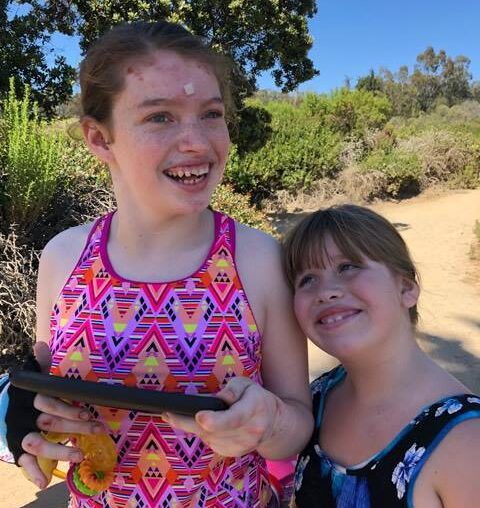“I went on social media, and I caught the attention of this guy who called himself a what? A compassion provider. He came and knocked on my door. He had a grateful dead shirt on and a cowboy hat.”

Finding herbs for pain
“I actually fell out of my bed in a seizure and tore my ab muscle. And my Korean roommate, nobody could pronounce his name, so I just nicknamed him Henry and it stuck. But Henry always made these herbal balls.”
And I came back from the ER with my torn abdominal muscle with a rib belt on, trying to use a bong. Henry comes up and says [in a heavy Korean accent] “Michael- you can’t eat it all. Can’t eat it all.”
Robinson’s roommate gave him herbal medicine for pain associated with his torn ab muscle. But he understood Henry poorly through the Korean accent, which created a happy but confusing period of discovery for Robinson. This meant that Mike initially overlooked the identity of Henry’s herbs.
“What stopped my epilepsy?”
They needed to know why his seizures stopped, so he handed Henry a pen and paper to avoid the language barrier. Henry began to write down c-a-n-n-a-b-i. Robinson cuts in, “S! So what? I Smoke weed?”
“That whole week I couldn’t smoke my weed. So I would grind it all up. I made weedfu — pressing it into my tofu — cooking it. I ate it raw. I had no idea that I was ingesting THCa, THC decarboxylated, and CBD that whole week long.
I had to actually research to figure it out. But what I did that night was mind-blowing. I went on Facebook — I need the weed they grow in Colorado.”
Calling the compassion guy
CBD and CBDa comprised some of the magic behind Henry’s herbal medicine. And Chemotype III cannabis cultivars express predominantly with CBDa relative to an almost non-existent THCa presence in the bud’s glands. They should further contain more CBDv, which, next to linalool, forms a strong entourage against seizures. The latter information was on the cusp of discovery in 2014 when Colorado was one of the few places growing Chemotype III strains in North America, possibly the globe.
“I went on social media, and I caught the attention of this guy who called himself a what? A compassion provider, he came and knocked on my door. He had a grateful dead shirt on and a cowboy hat. Can I help you? And he pulls out 40 ml of RSO. ‘I saw your post on Facebook, you need to use this oil.’
But how do you know where I live, I told you a whole city, man. So this guy introduces me to compassion, to giving. So, at first, Henry gave me ‘can’t eat it all’ [cannabidiol]. And then some guy shows up at my door, unnamed, giving me oil and I use that stuff to quit the — I counted — twelve drugs I was on.”
The mysterious Compassion Provider told him, “I’m a friend of Dennis Peron’s,” which ushered an abrupt response. In any case, Mike Robinson continued treating epilepsy with cannabinoid medicine for three months and regrets putting down the cannabis. Ten years earlier, he faced Non-Hogkins lymphoma for the first of now three battles. Unfortunately, cancer is stubborn when mutations originate from stem cells, often leading to recurrence after five to ten years.
“I truly believe people should pay close attention to the cannabinoid CBN with cancer battles. It was my first presentation of Academia: CBN, The Cancer-Fighting Cannabinoid. And the reason why CBN is imperative is it modulates T-cell counts. So you can kill cancer cells all day long, but if your other biomarkers are all off, it’s just going to grow more. So you have to do more than just kill cancer cells, you have to treat your body right. The CBN does that, too.”
Building on misfortunes with cannabinoids
‘You talk to people extracting, you put them together, you get their stuff and you give it to the kids.’ That’s what Dennis told me. Give it to the kids. — Mike Robinson
At the time, CBD was a popular topic for children with epilepsy, although accurate dosage information was scarce outside a few online publications, magazines, and technical science journals. This prompted Robinson to answer the call of duty, which catalyzed his introduction to a family he now happily calls his own. A meeting occurred intended to simply guide a new client and their daughter’s use of cannabis oil for CBD.
Silencing scientists
In the dark ages of cannabis, compassion providers were people who knew the medicinal value of cannabinoids and shared their knowledge. Before the internet, two magazines offered cannabis information written, at best, by rouge journalists who scraped up the little available information from UN textbooks and science conducted by researchers abroad.
This article first appeared as “A lifesaving medicine found him and his two daughters, from CBD to THC oil”, and was written by Travis Cesarone.


